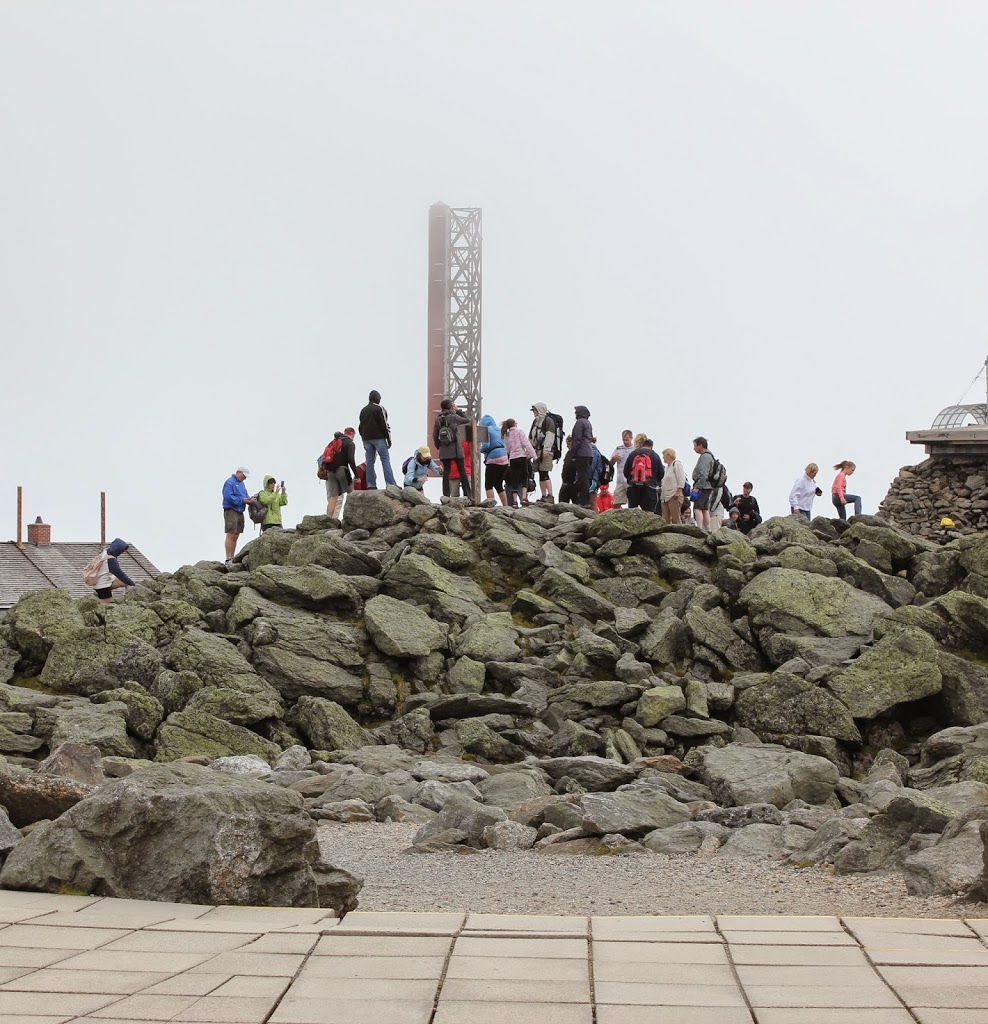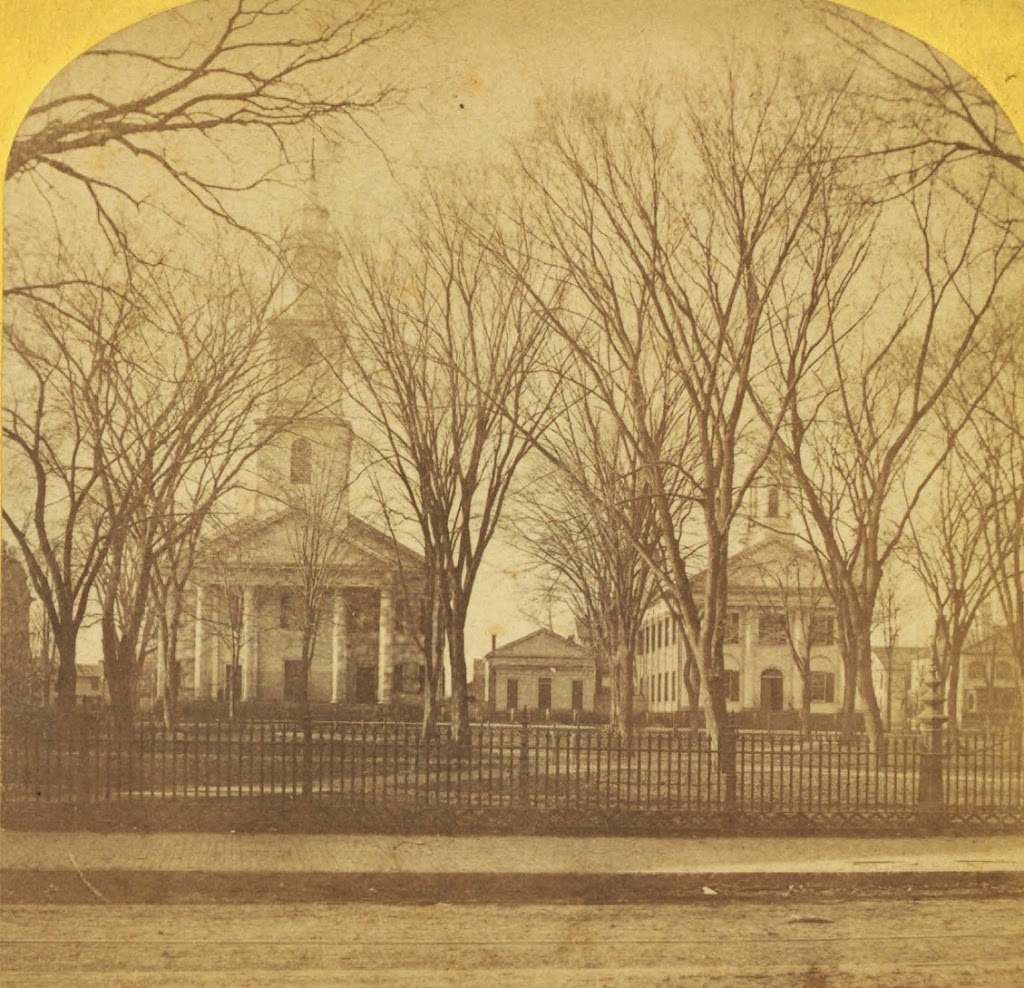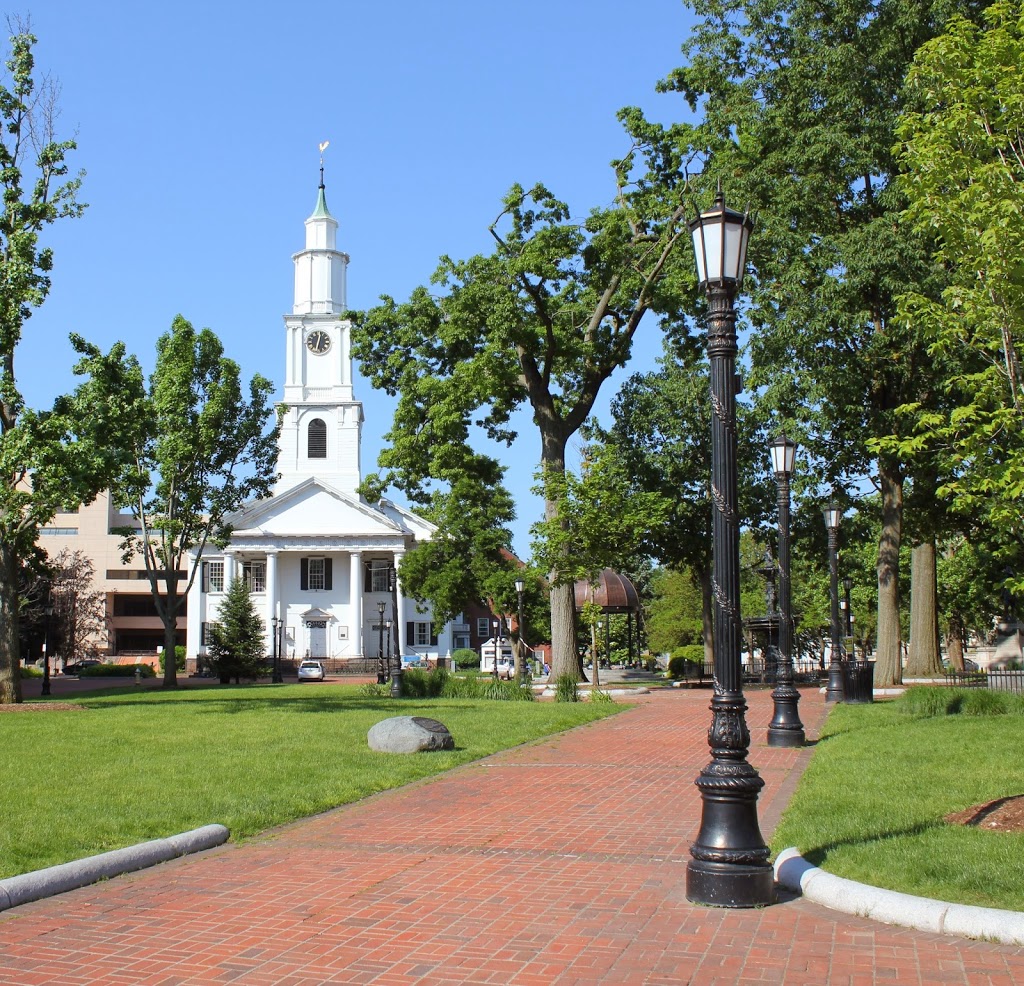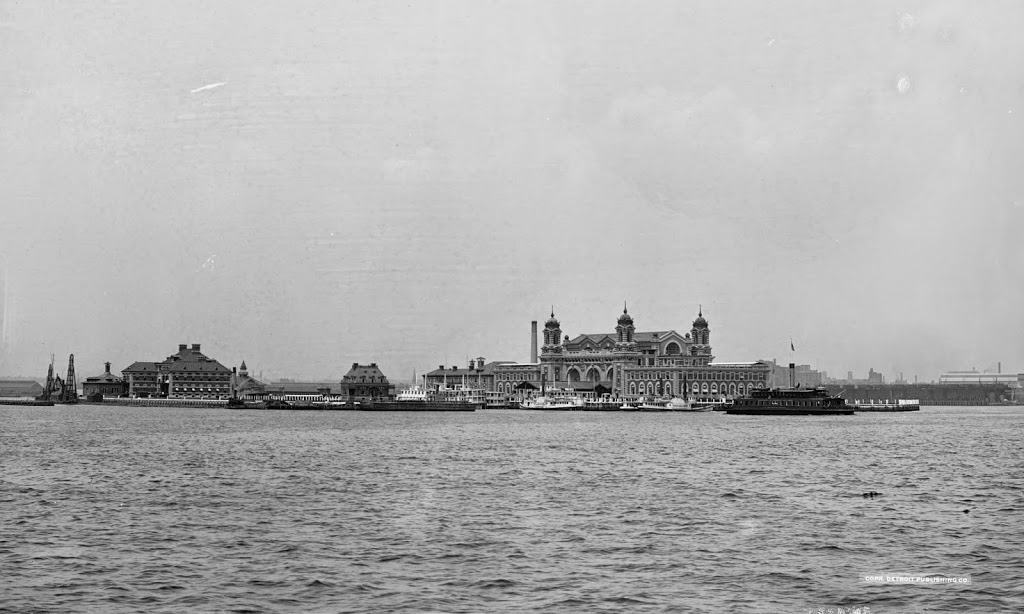The summit of Mt. Washington, around 1860. Photo courtesy of New York Public Library.
The summit in 2013:
I don’t know if the two photos were taken from the same angle – it’s impossible to tell without any landmarks – but they clearly show how popular the northeast’s tallest mountain has become. On the day that we went, there was literally a line of people waiting to ascend the pile of rocks that form the summit. Some climbed to the top, while others took the Cog Railway or, like us, drove to he top. If the 1860 date is correct, however, neither of these options were available to the individual standing on the top – the carriage road was not completed for another year, and the railway not until 1868.












